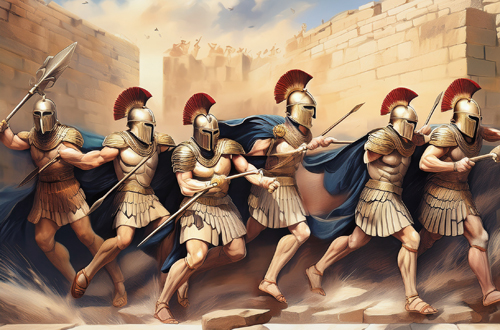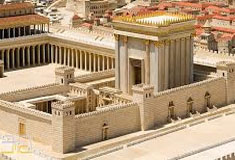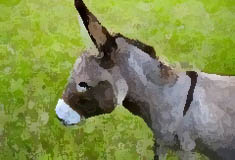Red Heifer and Red Blood: Signs of the Final Redemption
הרב שי טחןיט תמוז, תשפה15/07/2025About five major tragedies that shaped the identity of the Jewish nation
תגיות:עם ישראלשואהגאולה
Rabbi Leib Mintzberg writes (in his sefer Ben Melech) that there are five primary stumbling blocks in Jewish history—five major tragedies that shaped the identity of the Jewish nation. Each one, he says, carries an added dimension of hardship or spiritual darkness not present in the one before it. We will elaborate on his words:
A. Egypt
B. The Babylonian Exile after the destruction of the First Temple
C. The Roman Exile after the destruction of the Second Temple
D. The Expulsion from Spain
E. The Holocaust
Egypt
The essence of the Egyptian exile was Pharaoh’s attempt to prevent the formation of the Jewish people. Unlike other nations, Israel is a nation only through its Torah (as Rav Saadiah Gaon states). Thus, as long as we remained enslaved in Egypt, we could not receive the Torah and become a true nation. Pharaoh tried to block this through three forms of oppression:
1. Intellectual Enslavement – He sought to exhaust the people's minds through endless labor so they wouldn’t have time or headspace to contemplate divine ideas. As he said (Shemot 5:9): “Let the work be heavier upon the men so that they will not pay attention to false words.”
2. Emotional Enslavement – Pharaoh used psychological torture to break the spirit of the people: killing their sons, assigning women's work to men and vice versa.
3. Physical Enslavement – Through harsh labor, he left them no physical strength or time to pursue the divine.
Egypt was also sealed off through witchcraft and other barriers, making escape naturally impossible. But because Hashem had a different plan, He redeemed us with a strong hand and great miracles, gave us the Torah, and formed us into a people.
This may be why Egypt is not counted among the Four Exiles in Daniel’s vision—because the counting begins only after we became a nation at Sinai.
Babylon
Once we became a nation, new disasters came upon us, each threatening to erase our identity.
The Babylonian exile, following the destruction of the First Temple, was aimed at disconnecting us from our land and Temple. No other nation has ever survived an exile after being uprooted from its homeland. Yet remarkably, in Babylon, Torah and Jewish life flourished—great yeshivot were founded, and the Babylonian Talmud was composed.
Rome
The Roman exile was even harsher. The Romans had learned from Babylon’s failure: if you exile the Jews to one place, they survive and rebuild. So Rome scattered us to the four corners of the earth. Still, the Jewish people miraculously established Torah communities everywhere they went.
Spain
Next came the Spanish expulsion. The expulsion occurred in several countries, but since Spain was home to the most prominent and flourishing Jewish community—known as the Golden Age, where Torah and culture thrived—the expulsion came to be named after it. Hundreds of thousands of Jews were forced to choose between conversion or exile. This exile had new elements:
• Jews were forced to abandon their faith, not just their homes.
• Now, not only did the Jew lack a homeland, but he had no place in the world to rest—perpetual wandering
and rejection became his lot. Still, despite this unprecedented hardship, the nation survived.
The Holocaust
Then came the ultimate evil: the Nazi Final Solution, seeking to annihilate every Jew—young and old. And yet, miraculously, even this failed. After this unimaginable abyss, the Jewish people experienced a sudden and inexplicable ascent. Like a cosmic reset, the nation emerged stronger than before—rebuilding in its homeland a stronghold that flourished in many areas, most significantly through the reestablishment of yeshivot across the country, filled with an enormous number of students learning Torah day and night.
The Exile of Ishmael
But now there is a new trial, unprecedented in history: the Exile of Ishmael.
This final exile, as will be explained, is intended to prevent Israel from reaching the final redemption. To understand it, we must look at Daniel’s prophecy.
Nebuchadnezzar’s Dream: the Four Kingdoms
Nebuchadnezzar dreamed of a great statue, and Daniel interpreted each segment as representing a different empire.
• Head of gold (Babylon)
• Chest and arms of silver (Media and Persia)
• Belly and thighs of copper (Greece)
• Legs of iron (Rome)
• Feet of iron mixed with clay What is puzzling in the feet is the iron mixed with clay—explained by the Malbim to mean that Rome splits into two parts: iron (Rome) and clay (Ishmael).
This clay is mixed into the iron—meaning Ishmael does not conquer Rome but attaches itself like a parasite.
Rav Saadiah Gaon interprets Ishmael as being included in Rome, while Ibn Ezra holds Ishmael is the fourth kingdom itself. In truth, there may be no contradiction. All earlier empires rose by conquest. Ishmael is different: it doesn’t conquer—it attaches itself, like a tick that feeds off a host, as the Torah says of Ishmael: “He shall dwell upon all his brethren.”
The Zohar states that this final exile under Yishmael is, in fact, the most difficult of them all (vol. 2, 17b): “And a maidservant who inherits her mistress—this refers to Hagar, who bore Ishmael, who caused many evils to Israel, ruled over them, and afflicted them with many torments and decrees. To this day, they dominate Israel and prevent them from practicing their faith.
There is no exile as difficult for Israel as the Exile of Ishmael.” The Rambam writes similarly in his Iggeret Teiman: “Their evil is heavy upon us, and they cunningly seek to harm and demean us… no other nation has been more hateful or has done more to diminish and disgrace us than they.
Even King David, when seeing in prophetic vision the suffering from Ishmael, cried out: ‘Woe is me that I dwell in Meshech, that I dwell among the tents of Kedar’ (Tehilim 120:5).” He continues: “We endure their domination, their lies, and their deceptions beyond human capacity… Though we seek peace, they pursue us with hatred and war, as it says (Tehilim 120:7), ‘I am for peace, but when I speak, they are for war.’”
The Red Heifer and Modern Times
Recently, social media has seen a strange explosion of interest in the Red Heifer- Para Aduma. Rashi’s comment on Chukat suddenly makes sense in our time: “Because the nations of the world taunt Israel: What is this command (Referring to Para Aduma)? What logic is in it?—therefore it is a decree.” Throughout history, the nations had never mocked Israel over the Red Heifer—until now. Suddenly, there are thousands of videos portraying it as a threat or end-time event.
The Ohr HaChaim explains that every detail of the Red Heifer signifies harsh judgment, alluding to Edom, who throughout history shed the blood of other nations without enduring suffering himself—reflected in the red color of the cow. Red is Esav’s color. He was born red, craved red lentils, and was spiritually drawn to redness.
The Kli Yakar explains that Esav didn’t desire the lentils themselves, but their red appearance—he was drawn to the color. The Red Heifer now appears to threaten the nations, as they sense that the end is near. According to tradition (Rambam Para Aduma 3, 4), there were nine red cows, and the tenth Red Heifer is to be brought in the End of Days by Mashiach to purify the people, enabling them to ascend to the Beit HaMikdash and offer sacrifices.
It thus symbolizes the slaughter and downfall of the "cow"—representing Edom and Yishmael, who have merged into one entity. This explains the growing uproar surrounding the Red Heifer and the mounting tension over Har HaBayit. Just as Egypt’s mission was to prevent the formation of the Jewish nation, so too the final trial of the nations is to prevent the final redemption—before they lose their power and dominion.

B. The Babylonian Exile after the destruction of the First Temple
C. The Roman Exile after the destruction of the Second Temple
D. The Expulsion from Spain
E. The Holocaust
Egypt
The essence of the Egyptian exile was Pharaoh’s attempt to prevent the formation of the Jewish people. Unlike other nations, Israel is a nation only through its Torah (as Rav Saadiah Gaon states). Thus, as long as we remained enslaved in Egypt, we could not receive the Torah and become a true nation. Pharaoh tried to block this through three forms of oppression:
1. Intellectual Enslavement – He sought to exhaust the people's minds through endless labor so they wouldn’t have time or headspace to contemplate divine ideas. As he said (Shemot 5:9): “Let the work be heavier upon the men so that they will not pay attention to false words.”
2. Emotional Enslavement – Pharaoh used psychological torture to break the spirit of the people: killing their sons, assigning women's work to men and vice versa.
3. Physical Enslavement – Through harsh labor, he left them no physical strength or time to pursue the divine.
Egypt was also sealed off through witchcraft and other barriers, making escape naturally impossible. But because Hashem had a different plan, He redeemed us with a strong hand and great miracles, gave us the Torah, and formed us into a people.
This may be why Egypt is not counted among the Four Exiles in Daniel’s vision—because the counting begins only after we became a nation at Sinai.
Babylon
Once we became a nation, new disasters came upon us, each threatening to erase our identity.
The Babylonian exile, following the destruction of the First Temple, was aimed at disconnecting us from our land and Temple. No other nation has ever survived an exile after being uprooted from its homeland. Yet remarkably, in Babylon, Torah and Jewish life flourished—great yeshivot were founded, and the Babylonian Talmud was composed.
Rome
The Roman exile was even harsher. The Romans had learned from Babylon’s failure: if you exile the Jews to one place, they survive and rebuild. So Rome scattered us to the four corners of the earth. Still, the Jewish people miraculously established Torah communities everywhere they went.
Spain
Next came the Spanish expulsion. The expulsion occurred in several countries, but since Spain was home to the most prominent and flourishing Jewish community—known as the Golden Age, where Torah and culture thrived—the expulsion came to be named after it. Hundreds of thousands of Jews were forced to choose between conversion or exile. This exile had new elements:
• Jews were forced to abandon their faith, not just their homes.
• Now, not only did the Jew lack a homeland, but he had no place in the world to rest—perpetual wandering
and rejection became his lot. Still, despite this unprecedented hardship, the nation survived.
The Holocaust
Then came the ultimate evil: the Nazi Final Solution, seeking to annihilate every Jew—young and old. And yet, miraculously, even this failed. After this unimaginable abyss, the Jewish people experienced a sudden and inexplicable ascent. Like a cosmic reset, the nation emerged stronger than before—rebuilding in its homeland a stronghold that flourished in many areas, most significantly through the reestablishment of yeshivot across the country, filled with an enormous number of students learning Torah day and night.
The Exile of Ishmael
But now there is a new trial, unprecedented in history: the Exile of Ishmael.
This final exile, as will be explained, is intended to prevent Israel from reaching the final redemption. To understand it, we must look at Daniel’s prophecy.
Nebuchadnezzar’s Dream: the Four Kingdoms
Nebuchadnezzar dreamed of a great statue, and Daniel interpreted each segment as representing a different empire.
• Head of gold (Babylon)
• Chest and arms of silver (Media and Persia)
• Belly and thighs of copper (Greece)
• Legs of iron (Rome)
• Feet of iron mixed with clay What is puzzling in the feet is the iron mixed with clay—explained by the Malbim to mean that Rome splits into two parts: iron (Rome) and clay (Ishmael).
This clay is mixed into the iron—meaning Ishmael does not conquer Rome but attaches itself like a parasite.
Rav Saadiah Gaon interprets Ishmael as being included in Rome, while Ibn Ezra holds Ishmael is the fourth kingdom itself. In truth, there may be no contradiction. All earlier empires rose by conquest. Ishmael is different: it doesn’t conquer—it attaches itself, like a tick that feeds off a host, as the Torah says of Ishmael: “He shall dwell upon all his brethren.”
The Zohar states that this final exile under Yishmael is, in fact, the most difficult of them all (vol. 2, 17b): “And a maidservant who inherits her mistress—this refers to Hagar, who bore Ishmael, who caused many evils to Israel, ruled over them, and afflicted them with many torments and decrees. To this day, they dominate Israel and prevent them from practicing their faith.
There is no exile as difficult for Israel as the Exile of Ishmael.” The Rambam writes similarly in his Iggeret Teiman: “Their evil is heavy upon us, and they cunningly seek to harm and demean us… no other nation has been more hateful or has done more to diminish and disgrace us than they.
Even King David, when seeing in prophetic vision the suffering from Ishmael, cried out: ‘Woe is me that I dwell in Meshech, that I dwell among the tents of Kedar’ (Tehilim 120:5).” He continues: “We endure their domination, their lies, and their deceptions beyond human capacity… Though we seek peace, they pursue us with hatred and war, as it says (Tehilim 120:7), ‘I am for peace, but when I speak, they are for war.’”
The Red Heifer and Modern Times
Recently, social media has seen a strange explosion of interest in the Red Heifer- Para Aduma. Rashi’s comment on Chukat suddenly makes sense in our time: “Because the nations of the world taunt Israel: What is this command (Referring to Para Aduma)? What logic is in it?—therefore it is a decree.” Throughout history, the nations had never mocked Israel over the Red Heifer—until now. Suddenly, there are thousands of videos portraying it as a threat or end-time event.
The Ohr HaChaim explains that every detail of the Red Heifer signifies harsh judgment, alluding to Edom, who throughout history shed the blood of other nations without enduring suffering himself—reflected in the red color of the cow. Red is Esav’s color. He was born red, craved red lentils, and was spiritually drawn to redness.
The Kli Yakar explains that Esav didn’t desire the lentils themselves, but their red appearance—he was drawn to the color. The Red Heifer now appears to threaten the nations, as they sense that the end is near. According to tradition (Rambam Para Aduma 3, 4), there were nine red cows, and the tenth Red Heifer is to be brought in the End of Days by Mashiach to purify the people, enabling them to ascend to the Beit HaMikdash and offer sacrifices.
It thus symbolizes the slaughter and downfall of the "cow"—representing Edom and Yishmael, who have merged into one entity. This explains the growing uproar surrounding the Red Heifer and the mounting tension over Har HaBayit. Just as Egypt’s mission was to prevent the formation of the Jewish nation, so too the final trial of the nations is to prevent the final redemption—before they lose their power and dominion.
הוסף תגובה
עוד מהרב שי טחן
עוד בנושא עם וארץ ישראל








